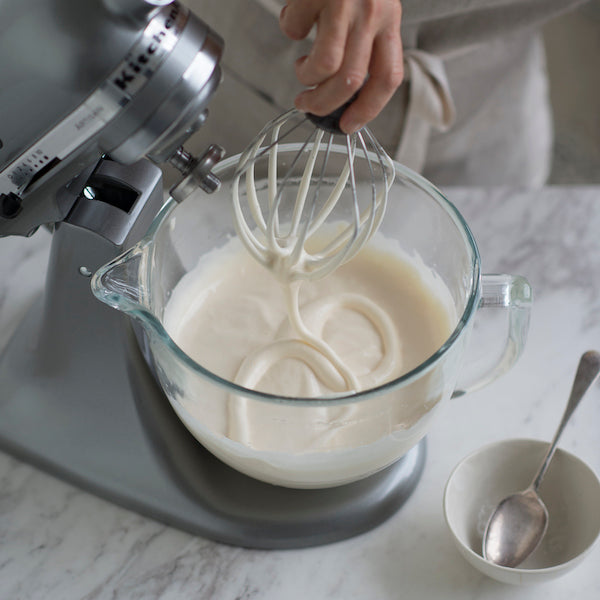Baking Terminology | Part 6
 Puree = the process used to blend, mash, or grind food (e.g. bananas) into a smooth, lump-free or paste-like consistency.
Puree = the process used to blend, mash, or grind food (e.g. bananas) into a smooth, lump-free or paste-like consistency.
 Ribbon stage = a stage that is reached after beating or whisking whole eggs or yolks with sugar until very thick and pale in colour. The stage is reached when the mixture falls slowly back into the bowl creating "ribbons" that hold their shape for a few seconds on the surface of the batter.
Baking Science: Whipping eggs or yolks with sugar incorporates air into the mixture and also dissolves the sugar into the eggs, allowing the egg mixture to be tempered which prevents it from coagulating(=forming of clots) when heated.
Tips & Tricks: Flavourings such as vanilla, lemon zest or juice. Mixture should be pale yellow
Baked Goods: Sabayons/Zabaglione/ Sponge cakes or baked goods that do not rely on leaveners (baking soda or baking powder) for lift.
Ribbon stage = a stage that is reached after beating or whisking whole eggs or yolks with sugar until very thick and pale in colour. The stage is reached when the mixture falls slowly back into the bowl creating "ribbons" that hold their shape for a few seconds on the surface of the batter.
Baking Science: Whipping eggs or yolks with sugar incorporates air into the mixture and also dissolves the sugar into the eggs, allowing the egg mixture to be tempered which prevents it from coagulating(=forming of clots) when heated.
Tips & Tricks: Flavourings such as vanilla, lemon zest or juice. Mixture should be pale yellow
Baked Goods: Sabayons/Zabaglione/ Sponge cakes or baked goods that do not rely on leaveners (baking soda or baking powder) for lift.
 Sift = the process of passing dry ingredients through a mesh (for example a sieve) to break up lumps and aerate ingredients.
Baking Science: Sifting aerates dry ingredients and creates a more uniform consistency, making them easier to incorporate into wet ingredients. It also helps in giving a lighter texture to baked goods.
Tips & Tricks: To combine dry ingredients more easily, first filter them through a sifter or a fine mesh sieve.
Baked Goods: Cakes, cupcakes, delicate pastries
See also
Sift = the process of passing dry ingredients through a mesh (for example a sieve) to break up lumps and aerate ingredients.
Baking Science: Sifting aerates dry ingredients and creates a more uniform consistency, making them easier to incorporate into wet ingredients. It also helps in giving a lighter texture to baked goods.
Tips & Tricks: To combine dry ingredients more easily, first filter them through a sifter or a fine mesh sieve.
Baked Goods: Cakes, cupcakes, delicate pastries
See also
Baking Terminology | Part 1 (https://t.me/espedition/734)
Baking Terminology | Part 2 (https://t.me/espedition/1030)
Baking Terminology | Part 5